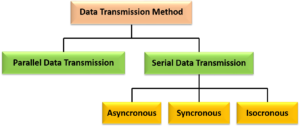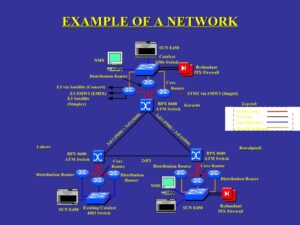Back to: Computer Studies JSS1
Welcome to class!
In today’s class, we shall be talking about the methods of information transmission. Please enjoy the class!
Information Transmission – Methods of Information Transmission
Information is the lifeblood of our interconnected world. From sharing ideas to conducting business, the ability to efficiently and effectively transmit information is critical. This class delves into the fascinating world of information transmission, exploring the various methods used to transport data across physical and digital spaces.
Methods of Information Transmission:

- Analog vs. Digital:
Analog: Information is represented by continuously varying physical signals, like sound waves or electrical currents. Examples include radio waves carrying audio signals and telephone lines transmitting voice data.
Digital: Information is encoded as discrete bits, represented by 0s and 1s. This allows for accurate and error-free transmission, making it the dominant method for modern communication.
- Transmission Media:
Wired: Information travels through physical cables, such as copper wires, coaxial cables, and fiber optic cables. Fiber optic offers the highest bandwidth and longest transmission distances.
Wireless: Information travels through the air via electromagnetic waves. Examples include radio waves for cellular networks, microwaves for long-distance communication, and infrared for short-range connections.
- Transmission Techniques:

Unicast: One-to-one communication where information is sent from a single source to a single destination. Examples include email and direct messages.
Broadcast: One-to-many communication where information is sent from a single source to multiple destinations simultaneously. Examples include radio broadcasts and online streaming.
Multicast: One-to-many communication where information is sent from a single source to a specific group of destinations. Examples include video conferencing and online gaming.
- Networking Technologies:

Local Area Networks (LANs): Connect devices within a limited physical space, such as a building or campus.
Wide Area Networks (WANs): Connect devices across geographically dispersed locations, often using public internet infrastructure.
Internet: A global network of interconnected computers facilitating information exchange on a massive scale.
- Error Detection and Correction:
Errors can occur during information transmission due to noise and interference. Error detection and correction techniques are employed to ensure data integrity.
Examples include checksums, parity bits, and error-correcting codes.
- Security and Encryption:
Protecting information from unauthorized access and manipulation is crucial. Encryption techniques are used to scramble data, making it unreadable without the proper decryption key.
Secure protocols like HTTPS and Secure Socket Layer (SSL) are essential for secure online communication.
The field of information transmission is constantly evolving, with new technologies emerging to improve speed, reliability, and efficiency.
Examples include 5G and future generations of mobile networks, satellite-based internet access, and quantum communication.
information transmission is essential for anyone who wants to understand how information flows in our digital world. This knowledge is critical for various fields, from computer science and engineering to business and communication. By exploring the diverse methods and technologies available, you can gain a deeper appreciation for the interconnectedness of our world and the tools that enable us to share and access information seamlessly.
We have come to the end of today’s class. I hope you enjoyed the class!
In the next class, we shall be discussing Modes of Information Transmission.
In case you require further assistance or have any questions, feel free to ask in the comment section below, and trust us to respond as soon as possible. Cheers!
Question Time:
- Explain the fundamental difference between analog and digital transmission.
- How do the characteristics of different transmission media (wired and wireless) affect information transfer?
- Compare and contrast unicast, broadcast, and multicast transmission techniques.
- What are the key components and functionalities of a network? Explain the difference between LANs and WANs.


